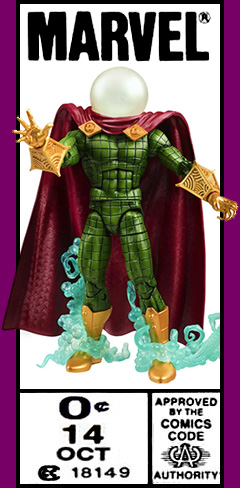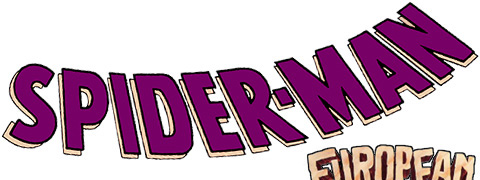


Hey, this is another good one. I put Mysterio in the corner box because this felt less to me like a Spider-Man movie in particular and more like chapter twenty-three of the MCU movie series; the central figure is actually Tony Stark, with Peter Parker defined primarily as his protégé. In chapter twenty-three, we pick up the pieces from chapter twenty-two, with many of the first wave of MCU heroes gone; doing a sort of Thunderbolts riff by stepping into the void in their absence is Mysterio. I wonder to what extent the writers expected that viewers would be taken in by him. If you have no idea who any of these characters are until they show up in the movies, then maybe you think that the filmmakers actually are rolling out another replacement Avenger, à la Captain Marvel? But if you’re even a casual fan of superhero comics, then of course you’re not going to be taken in for an instant, as you’ll recognize Mysterio as one of Spider-Man’s main villains, whose schtick is based upon illusions. That’s actually one of the reasons I liked this movie: instead of trying to reinvent the wheel the filmmakers just told a good Mysterio story. This sort of scheme is indeed right up Mysterio’s alley. It also, despite losing most of the standard Peter Parker trappings and replacing them with a combination of Ultimate Universe and MCU Avengers material, feels like a Spider-Man story, whereas the first couple of generations of 21st-century Spider-Man movies, despite greater fidelity to the events of the comics, really didn’t.
When I was fifteen, I went on a school trip to Europe much like this—Mysterio didn’t show up, but in a way, Spider-Man did (i.e., I bought a French comic with a translated reprint of a Spider-Man story in it). It was a little less ambitious than the trip in the movie—we went to Paris, the Loire Valley, Normandy, and London over the course of two weeks—and we weren’t all from the same school but rather from schools all over Orange County. Still, the scenes of two harried teachers escorting a group of teenagers to hotels and cultural sites were familiar—and in a very good way. I grew up in a fairly affluent household, but my upbringing was a lot lower in the sorts of enrichment activities than seems common among my students of a similar socioeconomic background. This trip to France was pretty much it—and it’s hard to overstate the impact it had on me. Like, when I think of being a teenager, that trip is almost always the first thing that springs to mind. I remember virtually every moment of it almost thirty-five years later. It’s still the only time I’ve ever been to Europe. So, yeah—obviously families shouldn’t splurge on things they genuinely can’t afford, but I would say to parents who are debating whether sending a kid on a trip like this is worth the expenditure or whether it’s a waste of money… in my experience, at least, these sorts of things can be life-shaping.
Runaways (season 3)
Brian Vaughan, Adrian Alphona, [Stan Lee,] Josh Schwartz, and Stephanie
Savage, 2019
The original Runaways comics were ensemble stories, but making Jonah the alien the Big Bad for over 80% of this TV show’s run made his daughter Karolina first among equals. (It’s a significant change from the comic, in which Karolina is usually stuck in the back row.) So to give someone else the spotlight, this season finally wraps up the alien plot in episode four and turns to Nico and the world of magic, introducing a new adversary for the group: Morgan le Fay.
The school the Runaways attend when they’re first introduced
is Atlas Academy, named after a comic book company from the 1950s
that had previously been called Timely Comics and would later be
called Marvel.
Timely and Marvel focused primarily on superheroes, but Atlas
produced comics in a wide variety of genres, with publisher Martin
Goodman and chief creator Stan Lee trying out anything that seemed
popular at any given moment.
Dennis the Menace is the hot new comic
strip?
Atlas puts out Melvin the Monster.
CBS is winning Emmys with Phil Silvers as Sergeant Bilko?
Atlas puts out Sergeant Barney Barker.
The comic strip Prince Valiant is being
turned into a movie?
Atlas tries to cash in with Black Knight,
a 1955 series in which Stan Lee and artist Joe Maneely do a Superman
riff in the world of Arthurian swords and sorcery.
Merlin summons the Sir Percy of Scandia to Camelot to play the role
of “a timid, harmless fool” who, as “one
unsuspected”, can “learn many things” and then
“battle the foes of the realm as The Black
Knight!”
In both his roles, the title character frequently crosses paths with
Lois Lane Lady Rosamund, who is enamored of the
courageous and mysterious Black Knight while disdaining the
cowardly Sir Percy: “How can so handsome a man be a
weakling?”
As for the aforementioned foes of the realm—they turn
out to be Modred the Evil and his wife, Morgan le Fay.
Cut to twelve years later; Atlas has become Marvel, and Stan Lee has
not only created the Avengers but handed them off to his
protégé, Roy Thomas.
Thomas is fixated on the idea of drawing everything Timely, Atlas, and
Marvel had ever published into the same world, and establishes that
the Camelot of Black Knight is indeed part
of the history of the Marvel Universe, with Sir Percy’s
descendant Dane Whitman eventually becoming an Avenger as the new
Black Knight.
Cut to eleven years after that, and we find Marv Wolfman trying
to make something out of a Spider-Woman character with a grand total
of one previous appearance; he gives her a medieval sorcerer named
Magnus as a mentor, and the connection to Camelot leads her to run
afoul of Morgan le Fay, who is thereby established in the modern
Marvel Universe.
Since then her profile has been raised a bit above “antagonist
of, weirdly, the 1970s Spider-Woman”: Kurt Busiek made her the
main villain of his first Avengers arc, Brian
Bendis positioned her as a respectable rival to Doctor Doom in
Dark Avengers, etc.
And now, here she is on the Runaways show,
and…
…they pretty much nailed it! Just as I watched the Spider-Man movie and thought, yep, that’s the Mysterio I know, I watched this and thought, yep, that is indeed Morgan le Fay. I suppose it’s no surprise: as noted in past articles, this show has been quite good with characters. Alex and Nico are near-perfect matches to their comics counterparts, while Chase, Gert, and Karolina are all improvements on their source material. The one misfire, and it’s a huge one, is with Molly; TV Molly is no more tolerable in the third season than in the first two. And while the parents have also been given a lot more personality than in the comics, the Runaways show falls into the trap, common in this genre, of reaching for face turns beyond the point at which that’s really permissible. Sure, you’ve all murdered a couple dozen teenagers while running a crime syndicate, but you helped out against Morgan, so bygones, amirite? Still, all in all, there was a lot of fun stuff here. A crossover with Cloak and Dagger, a series finale with glimpses of the future, and especially appreciated, a break from the unrelenting misery of the Netflix corner of the MCU.
 |
 |
 |
 |
||
|---|---|---|---|---|---|
Tumblr |
this site |
Calendar page |
|||